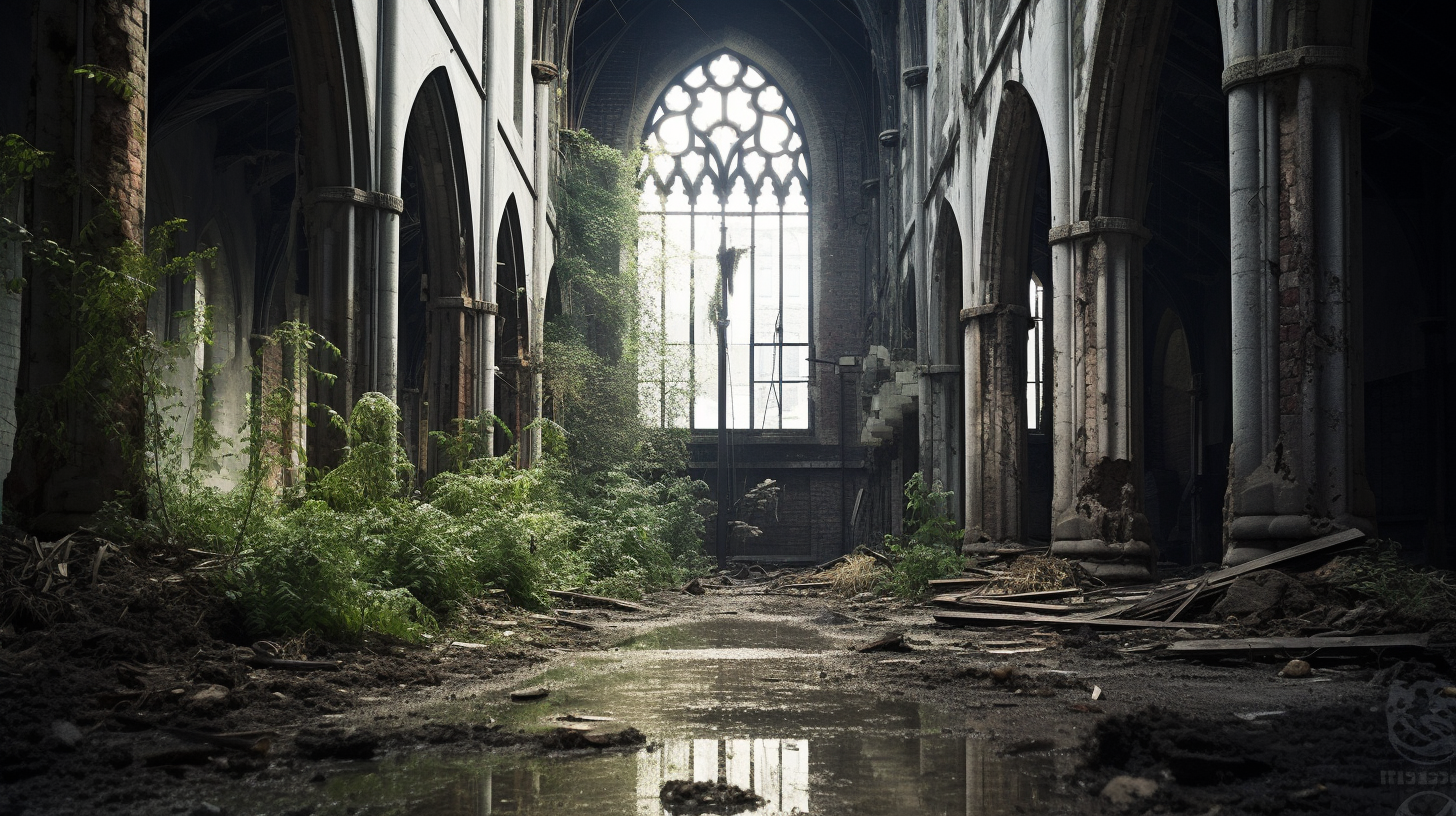In the wake of climate cataclysm and the desertion of massive urban territories, a new, eerie phenomenon settles among the ruins. They’re known as Ghost Stewards, the enigmatic sentinels of civilization’s skeletons, keeping watch over the derelict remnants of yesterday’s urban giants. This article embarks on a chilling exploration into the lives of these stewards and the abandoned spaces they guard—spaces that once pulsed with life but now resonate with silence.
As we weave through the vestiges of these decaying metropolises, one can’t help but be engulfed by the ambience of desolation. However, it’s within this void that the stewards emerge—an odd breed, birthed by necessity and resilience—on the outskirts of what was once San Francisco’s bustling waterfront, now a silent marshland, a lone figure stands, crowned by a rusted hard hat, eyes surveying the silent horizon. This is their territory; these are the Ghost Stewards.
Contrary to what the hopeful might believe, the Ghost Stewards are not activists with a plan of resurgence; they are the custodians of collapse, chroniclers of the end times. These men and women aren’t striving to revive the corpse of urbanity; they’ve embraced its death. In a way, they are librarians of a lost world—cataloging, repairing, and sometimes ensuring that nature’s reclamation proceeds with respect to the remnants of human architecture. They see beauty in the decay, a solemn dignity in preserving the narrative of downfall.
Take Abigail, a steward who once taught history in a Parisian university. Now, she roams the empty halls of the Louvre, her touch gentle on the dust-coated frames that hold the gaze of history itself. She says, To understand the future, one must preserve the past… even if it’s a forsaken one.
To these stewards, abandonment is not oblivion; it’s the canvas of remembrance.
Yet, their presence is more fundamental than mere archiving. The Ghost Stewards sometimes intervene to prevent hazards that could destabilize the precarious ecosystems evolving within these urban ruins—like patching up a crumbling sewer line threatening to poison a reclaimed marshland, or reinforcing a wall to prevent potential harm to the newly established wildlife colonies. These stewards have become a bizarre fusion of janitor, conservationist, and historian—all wrapped into one desolate figure.
In the bowels of an overgrown New York subway station, Ethan holds vigil, his artwork of light and shadow amidst the ruins acting as a silent protest, a lament, and a piece of haunting beauty. Shadows of a train in motion, made from repurposed scraps and flickering lights, give the impression of life that once was. His words echo softly, Art reflects life, but here, it also reflects its absence.
The existence of these Ghost Stewards raises questions about the nature of hope in a world resigned to decay. Are they the final flicker of human spirit holding the darkness at bay? Or are they perhaps unwittingly crafting the lore of a post-human earth, chroniclers of the last chapter of an extinct civilization?
As daylight wanes and we leave the silent cityscape, the profile of a steward is etched against the fading light. Unyielding, they stand as sentries to entropy, guardians of a past that the world has chosen to forget but cannot erase. The Ghost Stewards anchor us to a sobering truth—the future is written, not in the advances of the hopeful, but in the quiet resignation of those who watch over our cultural tombs.
